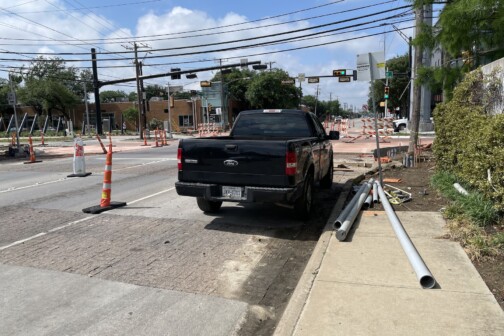
Around the world of walkable urbanism news, commentary, articles, and various other curiosities noted from the weekend and early morning insomnia:
——————————–
Propounding something I have advocated for a long long time, Green Biz suggests dropping taxes on good things, things we want to encourage like Income Tax (which was introduced to cover expenses during the American Civil War when the sale of war bonds proved inadequate and like many things established dug in like a tick and has proven impossible to rid ourselves despite its antiquity) and covering the difference with what we need less of, that is consumption, particularly of the conspicuous or profligate sort:
A Stuff Tax will not solve all of our problems. But it would hold us all responsible for what we consume, encourage employment and nudge our economy in the right direction. Until then, Uncle Sam will keep earning his dime by taxing employment and work — both the hairdresser who bikes to work and the hedge fund manager with two power boats and a private jet.
And that does not help our budget, our unemployed or our environment.
TreeHugger dips their toe in the water as well, here.
————————————–
Funny, I was just explaining this phenomenon Saturday before the US World Cup game, to which I joked, “I wonder when we’ll get a Frank Gehry” as if to suggest a building more as a sculptural piece extremely limited in its impact and meaning.
Forbes discusses the “Bilbao Effect” and how many cities have expected similar revitalization and visitation from museums and cultural totems have not had the same level of success. The brief answer is that a design response (whether program or physical layout and design) must be contextually appropriate for time, location, and need of the city and its people. Merely, taking what one city has done and applying it (in Dallas’s case extremely liberally) over and over again is nothing more than taking a copy of a copy, each less impactful than the previous as it doesn’t respond to local issues, the audience to whom it design works for.
Unfortunately, the worthy analysis is limited to an isolated throwaway line at the end of the article:
Despite attempts to emulate the “Bilbao effect” elsewhere in the world, very few new museums or galleries outside capital cities have succeeded in getting so many visitors. Gehry’s architecture and the Guggenheim’s art have proved an irresistible combination.
I outlined a much longer post that I’ll get around to writing up sometime about the visceral and largely negative reaction by such efforts.
—————————————–
As chain and box stores struggle and/or negotiate with cities about the inflexibility of the extremely value engineered design and function of their stores (ie cheap and efficient as possible), here is a list of formats Tesco stores have established in Europe to fit into a variety of contexts. An example:
Metro (approx. 7,000-15,000 sq ft) We opened our first Metro in 1992, bringing the convenience of Tesco to town and city centre locations, and now have over 170 stores. Metros cater for thousands of busy customers each week and offer a tailored range of mainly food products, including ready-meals and sandwiches.
Design and programmatic flexibility has allowed Tesco to invade urban markets and “follow the rooftops” into the City in places that would reject their conventional store formats. Ya know, because they have cities and neighborhoods worth defending.

———————————–
Taiwan proves high speed rail can be profitable, sort of.
————————————–
And lastly, as many readers may know, I like to take lessons from various natural sciences and apply them to cities. Here, a new theory is proposed explaining the concept of “quantum entanglement” as the “adhesive” maintaining interconnectivity of genetic strains. Does that help to explain the vital yet very fragile bonds of community, that it takes virtually infinite connections lacing a neighborhood into resilience? That is, until a freeway is proposed to tear through the heart of it like a scythe from the angel of community death, the DOT.





